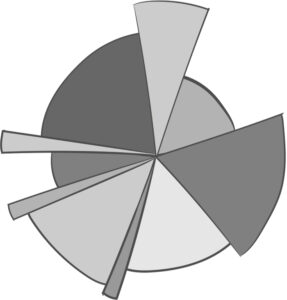Once something melts, it’s never quite the same.
Extra Shot
Inspiration is perishable.
From the moment we decide to start building an idea into reality, the force required is geared toward finding and then maintaining momentum.
Meaningful momentum is awakened in endless ways. Early momentum might mean showing up at an event for the first time, researching the competitive landscape, testing an early hypothesis, leaning into customer discovery, recruiting potential co-founders, building product, and eventually activating a launch sequence. Once a project is launched, the need for momentum never fades. If anything, it only becomes more important. There are many more examples, but growing the business, achieving milestones, and celebrating progress are all forms of valuable momentum. Even in later stages of a company, momentum drives activities like succession planning, navigating a successful exit, and considering how your human, financial, cultural, intellectual, and network capital can be recycled back into the entrepreneurial ecosystem.
No matter where you’re at in your own journey, if momentum is maintained long enough, the result can be a flywheel effect that feeds on itself. Anything you want to grow will always require endless work, but with less friction, momentum delivers more time, understandings, and space for different activities emerge.
On the flip side, if momentum is melting, it’s difficult to recapture. These are moments to consider when and what to quit. If there’s enough energy to keep writing the story, it’s neat how there’s always the option to keep building. A few sparks that can help regain momentum come to mind. For instance, (re)connecting with the startup community, learning something new, saying “yes” to unlock adventure, saying “no” to create space, travel, revisiting customer discovery, building a new feature, considering a pivot, onboarding new customers, and adding to the team.
Extra Shot
Need help regaining momentum?
The longer stagnancy lingers, the harder it will be to realign momentum. Tactics to maintain a creative state of kamiwaza, even when momentum is melting, starts with communication. Keeping honest communication consistent adds clarity and is the easiest way to appreciate the realities of slowness. Reducing the weird by exposing the why, also keeps different stakeholders on the same page, even during more lethargic times. By reducing the tension that quietly brews in silence, teams may be able to run at lower speeds. If left unattended, this can devolve into a lack of urgency that brings new challenges, but at a lower speed, perhaps less movement is needed to regain/retain the sense of shared momentum.
When we play long-term games with long-term people, momentum is crucial, but set your own pace by exploring the type of momentum you need at different stages within the work. This awareness helps you quit chasing momentum and sets us free to forge better art, at a sustainable speed. This helps us multiply mass and velocity, which equates to momentum when, where, and how it’s needed to keep building.
